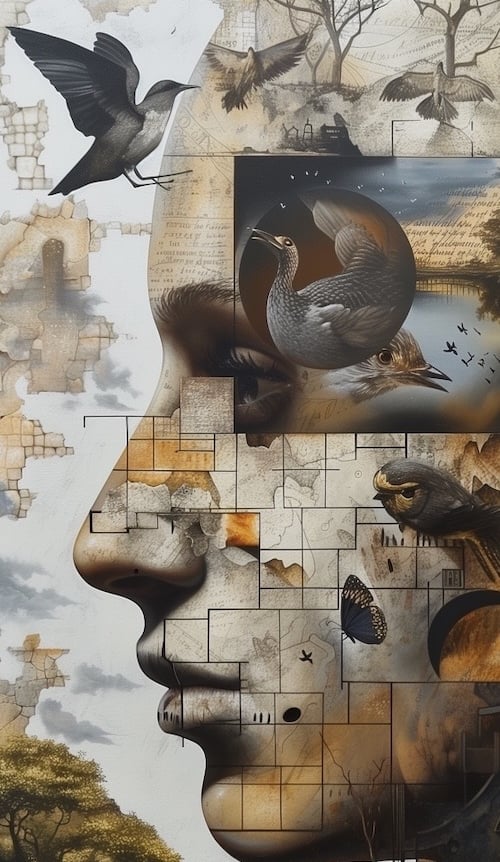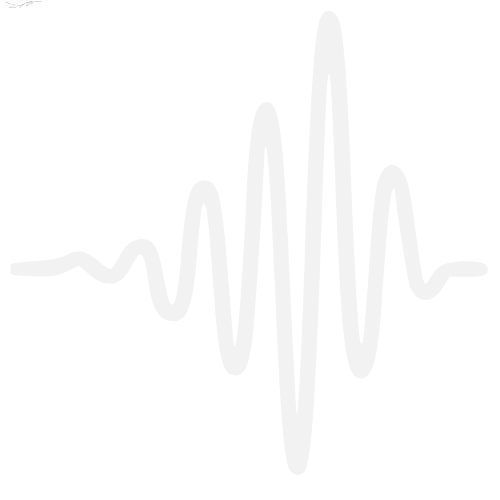
ADHD and ASD: A Personal Story of Discovery and Acceptance
"He's not the Messiah, he's just a naughty little boy."
Anchored in the depths of my life's dynamic chronicle, a new chapter beckons—a revelation not just of self but of a spectrum that paints my existence in more colours than I ever imagined. Let me share with you a tale not of woes but of enlightenment, a discovery that danced into my life in this Springtime of 2024, with the grace of a ballet, turning pirouettes of understanding across the stage of my understanding.
Delving deeper into this performance, I've always harboured a profound sense of difference, an undercurrent that set me apart from the flock. Throughout my journey, there has been a persistent feeling of being out of sync with the world around me, a square peg in a round hole. I've walked through life to the beat of a different drummer, often perceived as an enigma wrapped in a riddle—an anarchist at heart, challenging conventions without even trying. Indeed, I've worn the label of the family's black sheep like a cloak, a distinguishing mark that, while isolating, has also defined me.
This unique vantage point, though bewildering at times, has been the lens through which I've viewed the world, a perspective filled with as much curiosity as it was with estrangement. But amidst this sense of discord and displacement, there lay dormant a quest for clarity, an underlying yearning to decipher the enigmatic codes of my being, to find harmony within the cacophony. This pursuit, as relentless as the tides, has led me to the shores of self-discovery, to the brink of a revelation as illuminating as the dawn.


The Black Sheep: Navigating Family Dynamics and Individuality
Childhood Challenges: Understanding Early Signs of Neurodiversity
Looking back, as a child, mischief was my closest companion, a fellow traveller on my adventures through the labyrinth of youth. I was the ringleader of chaos, fingers dipped in every forbidden pie. At home, destruction was my unwelcome guest, as I dismantled toys not out of curiosity, but out of a misguided wilfulness, leaving a graveyard of beloved playthings in my wake. Out of sheer anger and frustration I’d bang my head on the floor. My sister’s treasured doll met a tragic end, a victim of my tempestuous whims, reducing her to tears and earning me a spot in the annals of familial infamy. Sorry Joan.
Vandalism, regrettably, evolved into an unintended pastime, the world around me transforming into an expansive canvas for the unchecked torrents of my youthful zeal. Public spaces unwittingly became stages for the wild expressions of my untamed energy. This penchant for disorder, an echo of a deeper restlessness, found a peculiar outlet in my fascination with flames—a curiosity that, unchecked, escalated into a series of ill-advised and dangerous experiments. These acts, born from a misguided quest for excitement and a lack of understanding of the consequences, ultimately marked me as a risk, a label I carried with the weight of misunderstanding.


When I think on these episodes of my childhood, I'm reminded of the humorous yet poignant line from 'The Life of Brian': "He's not the Messiah, he's just a naughty little boy." This phrase resonates with a newfound clarity, casting a light on the misinterpretations of my actions. While once I might have been viewed through a lens of concern or even alarm, I see now that much of my behaviour stemmed not from a place of malice but from misunderstanding and misdirection. I was not the herald of chaos some believed me to be; rather, I was a boy navigating the complexities of growth and identity, often choosing the wrong outlets for my boundless energy and curiosity.
In those days, the world seemed black and white, actions and consequences starkly defined, yet my place within it remained shrouded in shades of grey. Now, with the wisdom of hindsight, I understand that my actions, though misguided, were cries for guidance, expressions of a burgeoning identity struggling to find its place. The flames I once played with, literal and metaphorical, were not beacons of defiance but signals of a deeper need for direction and understanding.
Echoes of Authority: A Childhood Shadowed by Corporal Punishment
During my childhood, corporal punishment in schools was a harsh reality, with some teachers acting as both disciplinarians and enforcers. In Aden, my maths teacher had a habit of throwing the blackboard eraser at anyone who spoke out of turn. Thankfully, it never hit anyone, as most students had learned to duck. However, one day, his anger escalated. He broke a 3-foot wooden blackboard T-square over a student’s back, threw him to the floor, and kicked him. The entire class was left in stunned silence. Today, such behavior would undoubtedly lead to criminal charges, and I often wonder how the boy’s mental health was affected by that traumatic event.


This incident, and many others, were particularly distressing for me, navigating school life with undiagnosed ADHD and Autism. My neurodiverse condition intensified my response to such violent displays, embedding a profound sense of fear and injustice early on. At the same school, another figure of terror was our Latin teacher, Mr. Burns, who with his short curly hair and stern demeanour resembled a Roman Centurion. He would sit cross-legged on his desk, ominously picking at his nose while threatening to tie us to the ceiling fan by our bootlaces for any misstep, instilling a constant fear in all of us. My god, I still can’t get those damn Latin verb conjugations, “Amo, amas, amat”, out of my head. We should instead have been learning “odi, odisti, odit”.
This culture of fear followed me back to England when my father’s tour of duty ended, and I found myself at the all-boys Bemrose School in Derby. Despite its prestigious reputation, and my mother’s pride, my instincts screamed that it was no place of kindness. Here, the teachers, or 'Masters' as they were called, dressed in black cloaks and mortarboard hats, imposed a silence so oppressive it surpassed military discipline. Within less than 30 minutes of my first day, I spoke to another student and was immediately told by a master that I would be punished with 'The Slipper' – a rubber gym shoe used for spanking. True to his word, I was beaten in front of the entire class upon our return to the classroom. This draconian discipline, worsened by the lack of understanding for my neurodiverse traits, only deepened my sense of alienation and misunderstanding.
That same week, for a swimming lesson at Derby’s Queen Street Baths where we were told no bathers allowed, strip naked, I reached my breaking point and refused, a decision that undoubtedly led to further punishment, though the specifics have faded from memory, possibly as a protective measure.
Teenage Turbulence: Addressing the Struggles of Adolescent Years
Amidst the chaos of my high school rebellion, the consequences of my actions at Bemrose School (yes, I was a Bemrose Bucket Banger) took many forms, tangible reminders of the system’s attempt to reign in my unbridled spirit. Among these, corporal punishment, stood as a dark yet acceptable relic of a bygone era—a method I abhorred and which only fuelled my disdain for the structures that bound me, and fostered a deep-seated growing resentment. The physical reprimands that followed me like shadows were supplemented with the repetitive, mind-numbing task of writing 'lines', a punishment they termed 'Pensa'.
This peculiar form of discipline, archaic yet deeply ingrained in the school’s ethos, required me to inscribe the same pensum time and again. Whether it was 10, 20, or even 30 times, the task was tediously the same, each iteration a monotonous echo of the last:
"The pensum is a reminder that the orderly life of the school can be maintained only by the observance of certain rules and regulations, any infringement of which, however insignificant it may appear to the offender, is detrimental to the well-being of the community."


This task was made even more challenging by the fact that although Biros were available, we were not allowed to use them; instead, we had to use the old nib pen with ink from the desk inkwell. Additionally, being left-handed meant I was pushing the pen, not pulling it, causing it to dig into the paper rather than glide smoothly. With every line written, the words lost meaning but gained weight, a paradoxical punishment that aimed to instil discipline yet only served to deepen the chasm between me and the institution. The irony was not lost on me—the very act intended to correct my behaviour became a testament to my resistance, a silent yet defiant stand against a system I perceived as oppressive and out of touch.
For someone with ADHD and Autism, the 'Pensa' became an even more gruelling ordeal. My ADHD made it extraordinarily difficult to sit still and focus on such repetitive tasks, turning each session of line-writing into a torturous test of my patience and concentration. Simultaneously, my Autism amplified the sensory and emotional overload from such punitive measures, making the disconnect between me and the school’s methods even more pronounced.
The 'Pensa' became my unwelcome companion through the years, a repetitive task that, instead of quelling my rebellious streak, became a canvas for my frustration. Each word penned was a reminder of the misalignment between the school’s rigid expectations and my own tumultuous inner world. In this clash of wills, the 'Pensa' stood as a symbol of the school's attempt to mould me into conformity—an endeavour as futile as trying to cage the wind.
Through this ritual of repetition, the message intended to reform me instead reinforced my resolve, solidifying my identity as the outlier, the misunderstood protagonist in a narrative of convention versus chaos. Yet, in the grand tapestry of my journey, even these moments of contention and confinement have woven themselves into the broader narrative, contributing to the complex, colourful mosaic that is my life.
In contemporary Latin contexts, "pensum" (plural "pensa") is often used to mean a task or lesson, and you might encounter it in educational settings, especially within classical studies or in phrases related to the workload of students or scholars.


"Another Brick in the Wall," by Pink Floyd from their 1979 album "The Wall," is renowned for its critical portrayal of rigid and authoritarian schooling systems. The song’s lyrics, where children assertively sing "We don't need no education," challenge the oppressive educational practices of the time.
This message of resistance against the conformity enforced by schools resonates deeply with the experience of someone with neurodiverse traits, such as ADHD or Autism, as the conventional school environment often felt particularly alienating and restrictive. These individuals struggled with the demand for uniformity and the sensory overload of traditional classrooms, much like the children in the song fighting against being turned into "just another brick in the wall." The song's narrative of isolation and rebellion highlight the profound impact that an inflexible education system can have on a neurodiverse mind.
Watching this video all these decades later brings back those memories vividly. It is as it was—brutal and life altering. The raw emotion and rebellious spirit in the song stir a deep response within me. It upsets me deeply to recall those years, a poignant reminder of the challenges and isolating experiences that shaped me. The echoes of those days resonate as a stark testament to the resilience required to navigate such a world.
Another Brick In The Wall
If the video does not appear, refresh the page.
My final school years were spent at Leamington College for Boys, where I adopted a defiant stance, fuelled by a deep-seated resentment towards educational institutions. The woodwork teacher, also the scout master and not so affectionately nicknamed "Bummer," had a disturbing habit of punishing misbehaving boys by making them bend over in front of a workbench and clamping their ties in the vice, then hitting them with a 3-foot long spring steel panel saw. The fear and humiliation we endured under his watch were indescribable. One could only imagine, or not, the sadistic pleasure he got looking at the trembling bottoms of those young boys. Perhaps it's as well I was never on the receiving end of his punishments as I would never have submitted to them.
Our chemistry teacher at Leamington College seemed like an austere character straight out of a Dickens novel with a twist of Edgar Allan Poe, except he wore a long grey lab coat. Towering and lean, with an elongated expressionless face, he had a pallid complexion and eyes that sat high in their deep, dark sockets. His walk was a distinctive looming stride like ‘Lurch’ from ‘The Addams Family’. His speech was ponderously slow and droning, especially noticeable every time he mentioned a 'copper calorimeter can'— three often repeated words that felt as endless as Tolstoy's War & Peace. His droning monotone and otherworldly look completely scattered my focus, making it impossible for me to stay tuned in. It’s as well that he stationed me and my partner in mischief at the back of the class, where we could carry on quietly without disturbing others. Perhaps it's no shock that I managed to score only 1% on my final O-Level exams in Chemistry.
These experiences, marked by a continuous threat of punishment, left no room for fond memories from my school years. They shaped a view of educational environments as places of fear rather than growth, deeply affecting my perception of authority and trust. My neurodiverse traits, which went unrecognised and unsupported, contributed significantly to my difficulties in such a punitive atmosphere, highlighting the crucial need for understanding and accommodating neurodiversity in all educational settings.
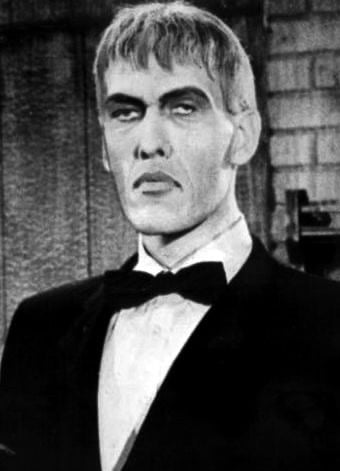

Defiance and Distress: Echoes from Leamington College
Echoes from a Carved Past: Unveiling the Silent Pleas
In the shadowed corners of memory, where the echoes of childhood reverberate, a single word repeatedly carved and doodled during those seemingly endless hours in the classroom takes on a profound significance. This is not just a tale of adolescence or the mundane passage through the educational system; it is an excavation of a silent cry for help, a narrative woven through the seemingly innocuous act of a young mind carving " 'elp " into the wood of a school desk and scattering it across the pages of notebooks as lessons droned on.
The discovery of this narrative began not in the annals of the past, but on a seemingly ordinary day 60 years later, today, 10th April 2024, with the morning ritual of sipping a half-strength flat white at 'Coffee Club' and flipping through the pages of the West Australian. Among articles on local happenings and global events, one piece stood starkly out—a story about a teen artist who had won first prize for their installation, which strikingly featured a school desk. It wasn't the accolade that captured attention but the raw, poignant message carved beneath the desk's lid: "Help Me."
In that moment, the past collided with the present. The desk wasn't just an artist's canvas but a mirror reflecting a deeply personal experience. It wasn't the artist's message that resonated so profoundly, but the realisation that this message had once been my own. The repeated scribbles of "' 'elp ", a phonetic cry, carved not just into the wood but into the fabric of time, suddenly gained clarity. What had been an inexplicable habit, a seemingly meaningless defacement, was, in truth, a manifestation of a young mind's silent plea for understanding, for escape from a world where he felt caged.
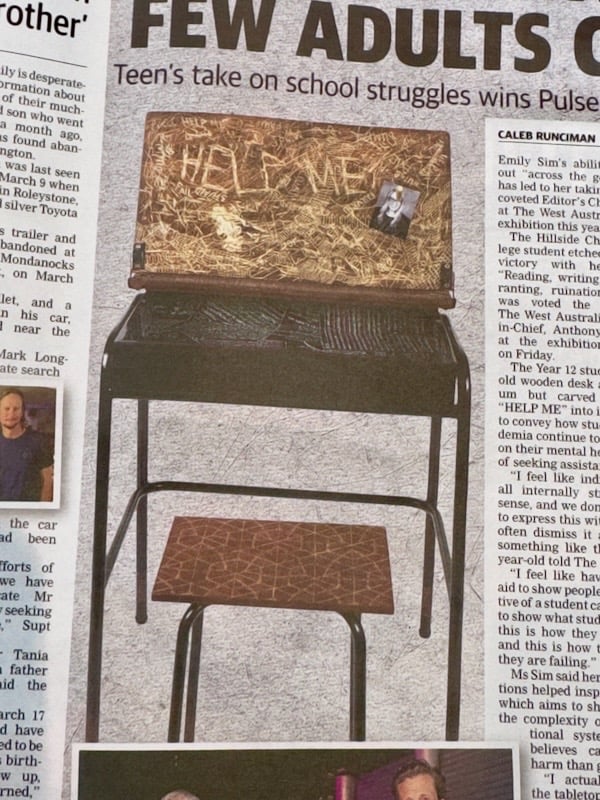

School, rather than being a sanctuary of learning and growth, felt more like a prison. Each day was a struggle, not against the rigours of academia, but against an educational system ill-equipped to recognise or nurture the unique brilliance of a neurodiverse mind. The carvings and doodles weren't acts of rebellion or boredom; they were the only means of expression available to a soul who felt misunderstood, stifled by an environment that valued conformity over creativity, memorisation over imagination.
The inability to focus, to follow the slow and steady pace of traditional teaching, left me not only frustrated but often falling behind. My ADHD made it difficult for me to sit through long periods of lecture, absorbing vast amounts of text or maintaining concentration on subjects that did not engage my swiftly shifting focus. Similarly, my Autism made the typical school environment—an assault of sensory inputs and rigid social norms—overwhelming. This disconnect meant that traditional methods of discipline, such as writing lines or the harsher penalties that followed transgressions, were not only ineffective but often counterproductive. They amplified my anxiety and frustration, pushing me further away from the potential to engage and learn in a meaningful way.
The concept of 'neurodiversity' was nonexistent, as foreign to the educators of the time as the idea that a student might possess a different way of seeing the world. Yet, there it was, the evidence etched beneath the desk lid, hidden in plain sight. It was a cry for help from a young me, who knew only that he was different, without understanding why or how. It was a testament to the resilience of a spirit that sought to make itself heard, even when it didn't fully comprehend the message it was trying to send.
Today, with decades of life experience and a greater understanding of neurodiversity, the meaning behind those carvings comes into focus. It's seen not as a mark of defiance, but as a badge of survival, a breadcrumb trail left by a younger self, navigating the complexities of a world that wasn't ready to understand me. The journey from those classroom days to now has been one of discovery, of learning to harness the unique perspectives and talents that neurodiversity bestows.
Reflecting on this journey, there's a realisation of the importance of listening to the unspoken words of the young, of recognising the signs when someone is struggling to fit into a mould that does not accommodate their shape. The desk, with its carved plea, becomes a symbol—not of frustration, but of hope. It's a reminder that even the most silent cries for help can echo through time, waiting for the moment when someone will finally hear and understand.
In understanding my past, I have found another key to my own liberation, a way to free the prisoner within. It's a poignant reminder that sometimes, the most profound insights come not from the grand gestures of life, but from the quiet moments of reflection, from recognising yourself in the silent plea carved into an old school desk.
"I don’t have a train of thought. I have seven trains on four tracks that narrowly avoid each other when paths cross, and all the conductors are squirrels."
Adulthood Realisations: Coming to Terms with Personal Growth
As an adult, the mosaic of my behaviour continued to perplex and challenge. Interruptions became my conversational trademark, bulldozing through discussions with the subtlety of a freight train. Queues were the bane of my existence, each minute spent waiting a sensory assault on my patience. My mind was a theatre of distractions, flitting from one unfinished project to another with the fickleness of a summer breeze. Commitments felt like prisons, and routines were the chains I sought desperately to break.
While driving, my preference leans heavily towards solitude; an empty passenger seat is often my ideal scenario. On the rare occasions I do accept a companion, it is with reluctance, and never more than one. The presence of three passengers, with their incessant chatter, is something I find overwhelmingly distracting. In my vehicle, silence is golden; no music dares to invade this quiet sanctuary. Additionally, cleanliness is non-negotiable—the steering wheel boss, dashboard, and centre console must be free from any speck of dust.
Visibility is paramount; a dirty windscreen is simply out of the question. I find that the car not only looks better but seems to run more smoothly and quietly when it's freshly cleaned, adding to the overall comfort and safety which are prime considerations for me. I view dents, scratches, and any form of disrepair with urgency; they are rectified promptly as they disrupt the vehicle’s harmony and my peace of mind.
Furthermore, any squeaks, rattles, or any looseness in the steering or suspension are addressed with priority, ensuring the car is in optimal condition. My approach to driving mirrors the responsibility of piloting an airliner with 300 souls on board—safety and comfort are paramount, and every detail matters. This mindset underscores my seriousness about the responsibility behind the wheel, affirming that everything, from cleanliness to the mechanics, must be working perfectly.
I always ensured my appearance was nothing short of impeccable, paying close attention to grooming and attire. For years, my daily uniform consisted of a crisply tailored suit and tie, regardless of the day of the week. This wasn't about pride or an attempt to show off; it felt essential to me, a non-negotiable part of my identity.
My living spaces mirrored this meticulousness. Each home I occupied was arranged with stylish, carefully chosen decor, resembling more of a model display home than a personal dwelling. This penchant for perfection in both personal and environmental aspects led my friends to affectionately dub me "Peter Perfect", whilst others assumed I must be gay!
My relentless pursuit of perfection became the lens through which I viewed not just myself but also those around me, especially in the realm of relationships. This endless search, this quest for an ideal that doesn't exist in the human condition, has been the undercurrent of so many connections I've formed and lost. The folly of seeking perfection in others, expecting them to fit into an impossible mould I had crafted, took years for me to recognise and even longer to understand. No one is perfect – a simple truth, yet one I foolishly overlooked, always wondering if the grass was greener, if the next person would be 'the one' who met every unrealistic standard I set.
I see only now how often I found what I thought was my ‘ideal,’ only to remain unsatisfied, driven by a misguided belief that there might be someone ‘better’ just around the corner. But what was I truly seeking? In chasing the superficial—appearances, status, the outward signs of what I deemed ‘perfection’—I overlooked the essence of genuine connection: the heart and soul of a person. Adding to this complexity was another neural trait at work, Narcissistic Personality Disorder (NPD), which added an extra dimension to the equation. My covert narcissism fuelled an insatiable need for admiration and validation, making it difficult to appreciate the genuine connections that truly matter.
Navigating relationships like minefields, my impulsive words and actions were like unintentional traps set by my own hands, causing unintended hurt and confusion. To those who journeyed with me, to the long list of partners who felt the brunt of my unrealistic expectations, I extend my heartfelt apologies. The realisations and reflections that have come with time have been sobering, to say the least.
Similarly, this pursuit bled into my professional life, transforming what could have been a straightforward path into a tumultuous journey riddled with self-imposed obstacles. Each project, each deadline, was not just a task to complete but another battle against my own relentless standards, a daily confrontation with my perceived limitations. I mistook these self-created hurdles for external challenges, failing to recognise that the biggest obstacle was my own perception of perfection.
It took a great deal of time, and an array of missed opportunities and broken relationships, to finally gain the wisdom to see past this illusion of perfection. Understanding that the very concept is not just unrealistic but inherently flawed has been both humbling and liberating. The acceptance that imperfections are not flaws but facets of our individuality has reshaped my approach to life, relationships, and self-expectation. No longer am I the boxer in the ring against an unattainable ideal; instead, I'm learning to embrace each day, each challenge, and each person for the unique, imperfect beauty they bring into my world.
Yet, understanding the multifaceted nature of my experiences now casts these memories in a new light. Each act of mischief, each moment of impatience, each burst of destructive energy, they all form pieces of a complex puzzle that is me. This journey of self-discovery does not rewrite my past but offers a key to understanding the enigma of my actions. Armed with this newfound clarity, I am now navigating the winding paths of life with a map that aligns more closely with my true self.
The bipolar diagnosis I received a few years ago shed light on many aspects of my life. It was a eureka moment, yet there remained a lingering feeling that something was missing, a subtle whisper suggesting that the full picture was yet to be seen. It's been a journey with more questions than answers, until recently. But now, the missing pieces began to fit, revealing a broader understanding of who I am. This revelation has been like finding yet another piece of a jigsaw puzzle – it has transformed my view of myself and my place in the world. Emerging from a year of introspection, and a formal diagnosis, this emerging clarity has been incredibly freeing, opening doors to new realms of self-acceptance and understanding.

The Revelation: Discovering Neurodiversity and Self-Identity
I always known I was different, but it's only in recent years I discovered I had Bipolar 1 Disorder. Yet there lingered a persistent whisper, a sense that there was something more, like roast lamb without the mint sauce. I chronicled the adventures of the BiPolar Bear, an alter ego that embodied my dance with bipolar disorder. Through poetry and prose, I navigated the tumultuous seas of manic euphoria and desolate lows, sketching the contours of a life defined by extremes. Yet, even as I delved into these depths, a quiet dissonance suggested other forces at play, characters yet to be named in the saga of my existence.
The revelation came cloaked not in shadows, but in a cascade of illuminating light, bringing clarity and understanding to the myriad ways I've danced through life. Alongside my companion, bipolar disorder, stand three other profound aspects of my being:
Attention Deficit Hyperactivity Disorder (ADHD) and traits that graze the spectrum of Autism Spectrum Disorder (ASD).
Far from casting a shadow, this trinity of truth has set me free, lifting the veils that have long obscured my view. With the glee of an explorer discovering new lands, I embrace these facets of my being. ADHD, with its boundless energy and creativity, its capacity for hyper-focus that can make time stand still, and yes, its whirlwind of distraction that scatters thoughts like autumn leaves. ASD, a whisper of a trait that tunes me into the world in a unique frequency, allowing me to see patterns and details others might miss, even as it sometimes makes the cacophony of everyday life feel overwhelming.
To some, such mental health labels might seem daunting, heavy titles to bear. But for me? They are keys unlocking the doors to self-understanding, badges of honour that I can wear with pride. They do not define me; they illuminate the intricate design of my being, explaining the why behind the symphony of my actions, thoughts, and emotions.
This enlightenment has been like the dawn after a long night, the world around me painted in hues more vibrant than before. The weight that has long perched upon my shoulders has lifted, the clouds parting to reveal the infinite blue of understanding and acceptance. I stand not in the shadows of diagnosis but in the light of discovery, celebrating the unique constellation of characteristics that make me who I am.
And so, I shout from the rooftops, not in distress but in jubilation. I am Peter, an opus composed of notes of bipolar, ADHD, and a touch of ASD. A veritable triumvirate! These notes do not confuse, they add clarity; they create a composition of understanding, a portrait of a life lived not in spite of but because of its rich complexity.
To those who journey alongside me, know that this revelation is not an end but a beginning, a new chapter in the ever-evolving story of my life. It is an invitation to dance in the rain, to find joy in the uniqueness of being, and to celebrate the diversity of the human experience.
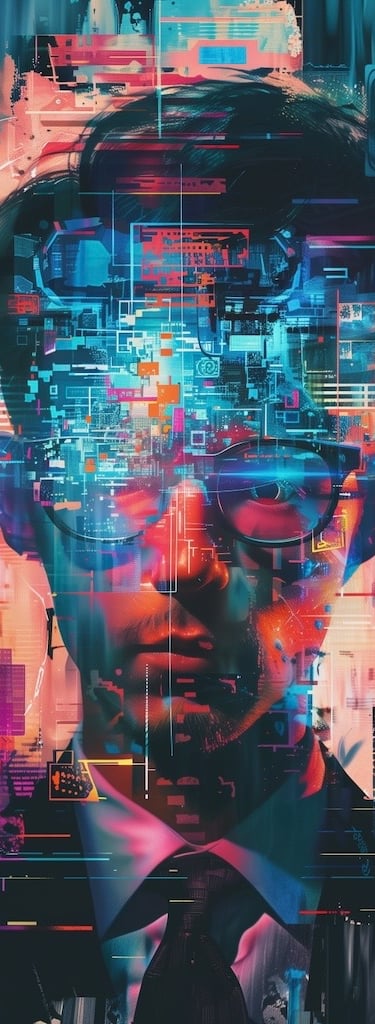

"I'm not easily distracted...
I'm just incredibly interested in everything."
Concluding Thoughts: Embracing Life's Journey with ADHD & ASD
In the grand orchestra of my life, the BiPolar Bear, once a solitary figure, now harmonises with the nuanced melodies of ADHD and the intricate rhythms of ASD. This ensemble of identities crafts a symphony that is uniquely mine, echoing through the corridors of my existence with newfound vibrancy and depth. Yet, there was still one more trait still to be uncovered, adding an extra dimension to this complex equation: Narcissistic Personality Disorder (NPD). So, I am a melange of four conditions.
This revelation, crystallising late in life, has not merely shed light on uncharted aspects of my being; it has illuminated my entire world. Understanding that I am not defined by these aspects, but rather enriched by them, has opened the doors to a realm of self-acceptance and celebration I never knew existed.
No longer am I a ship adrift in the fog of uncertainty. Armed with this quartet of self-awareness, I navigate the waters of life with a steadier helm, embracing the winds of change with open sails. Each day unfolds as a chapter yet to be written, filled with potential for discovery, growth, and the sheer joy of, from this day forward, being unapologetically me.
To those who have walked with me, through storms and stillness alike, I extend a heartfelt thank you. Your presence has been a beacon, guiding me back to shore time and again. As I continue on this journey, I invite you to join me in celebrating not just the trials and triumphs that have shaped me, but the unending quest for understanding that defines us all.
So here I stand, Peter, no longer just the black sheep or the enigmatic outlier, but a vibrant canvas painted from a spectrum of hues, each colour a testament to the complexity and beauty of neurodiversity. How about that, indeed! As I step forward into the unfolding narrative of my life, I do so with eyes wide open, heart full, and an unwavering spirit, ready to embrace whatever melodies and rhythms the future holds.
